Cumbria Museums and Galleries

Literally follow in the footsteps of England’s most famous poet as you complete a circuit of one of the Lake District’s smallest, but prettiest lakes.
Follow the trail
Distance: 4.3 miles/6.9km
Total ascent: 710ft/216m
Approximate time: 2½ hours plus time for sightseeing
Start/finish: Dove Cottage
Terrain: Moderate - quiet lanes; rough woodland paths; short sections on pavement; good lakeside path
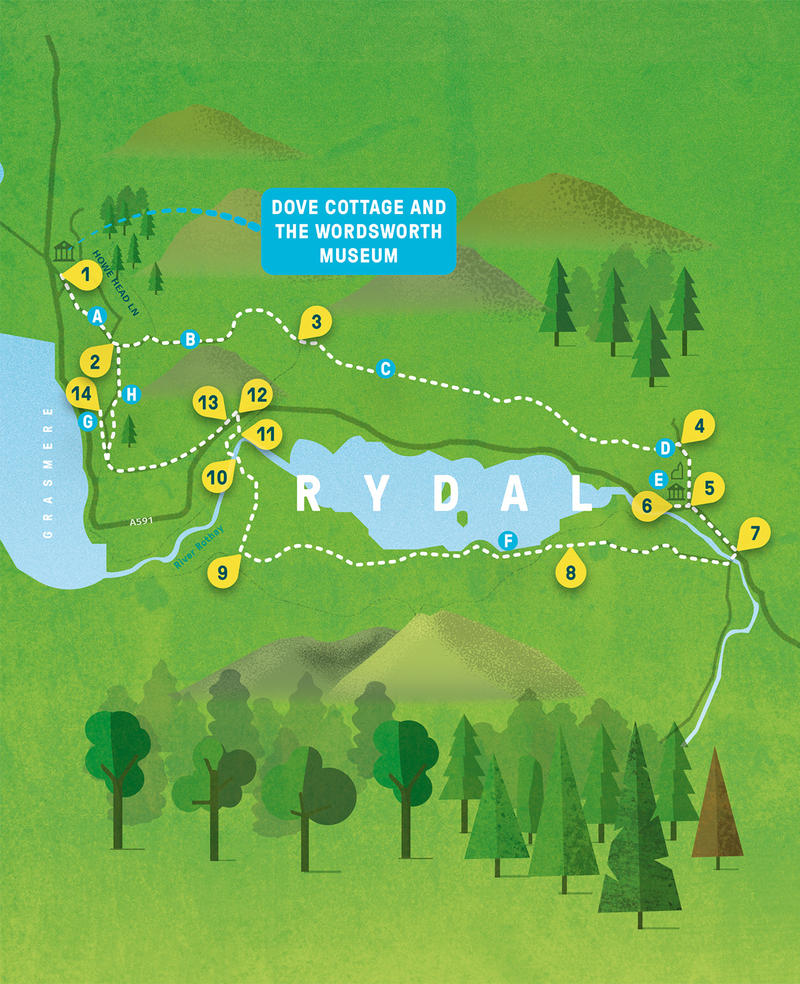
1 With your back to Dove Cottage, turn left to walk uphill.
A Watch for a boulder to the left of the road after about 150 metres. This lane – and the path you follow as far as Rydal – was once a ‘Corpse Road’ or ‘Coffin Route’. Before St Mary’s Church in Ambleside was consecrated, coffins had to be transported along this route from Ambleside to St Oswald’s Church in Grasmere for interment. The boulder, known as the Coffin, or Resting Stone, was used to support the coffin while the bearers rested.
2 Just past the farm, take the lane that bears slightly left, heading up the hill.
B Follow the road once it levels out, and after the wall on your left ends, you will walk alongside White Moss Tarn. This is believed to be the “pool bare to the eye of heaven” where a leech-gatherer is encountered in William’s poem Resolution and Independence. The manuscript can be seen in the Wordsworth Museum, along with two pairs of his glasses - can you imagine a bespectacled Wordsworth reciting his poetry by candlelight?
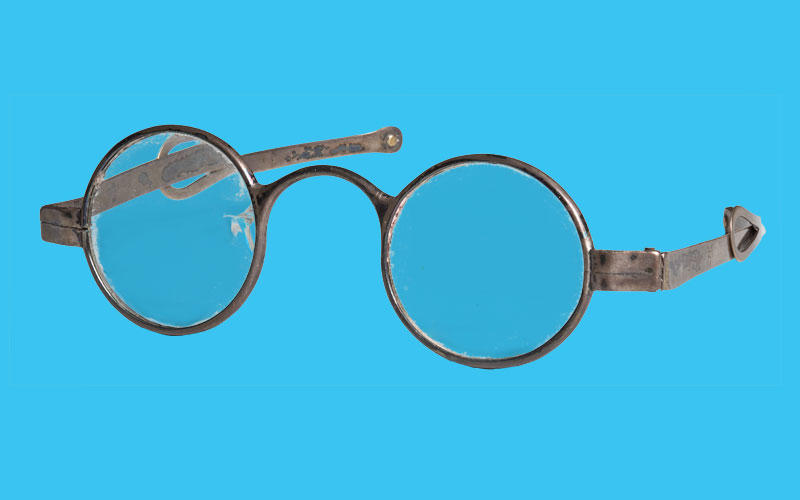
3 After passing below the solitary cottage of Brockstone, keep to the track which goes straight ahead through a gate. The route passes in and out of pretty woodland with views down to Rydal Water and across to Loughrigg Fell.
C If you’d walked this path in the first half of the nineteenth century, there’s a chance you might have encountered William here; he lived, after all, at either end of the route for the best part of half-a-century. With stick in hand, and on sunny days wearing his straw hat, he would wander the valleys and the fells, drawing inspiration from the landscape for his poetry. Today both items can be seen in the Wordsworth Museum.
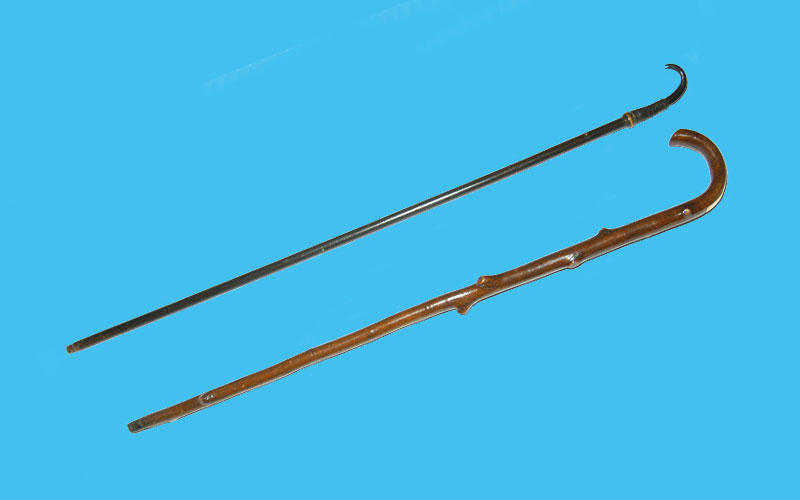
4 Turn right on reaching a quiet lane at Rydal.
D Rydal Mount, Wordsworth’s home from 1813 until he died in 1850 and today open to the public, is on the right as you head downhill.
5 On reaching the A591, briefly turn right to visit Dora’s Field. With a National Trust sign on the gate, it’s on the right after about 80 metres.
E Wordsworth owned this small patch of land and had intended to build a home for his daughter Dora on it. After she died in 1847, he planted hundreds of daffodils here in her memory. Dora was buried along with other members of the family in the graveyard at St Oswald’s in Grasmere, but a plait of her hair can still be seen in the Wordsworth Museum.
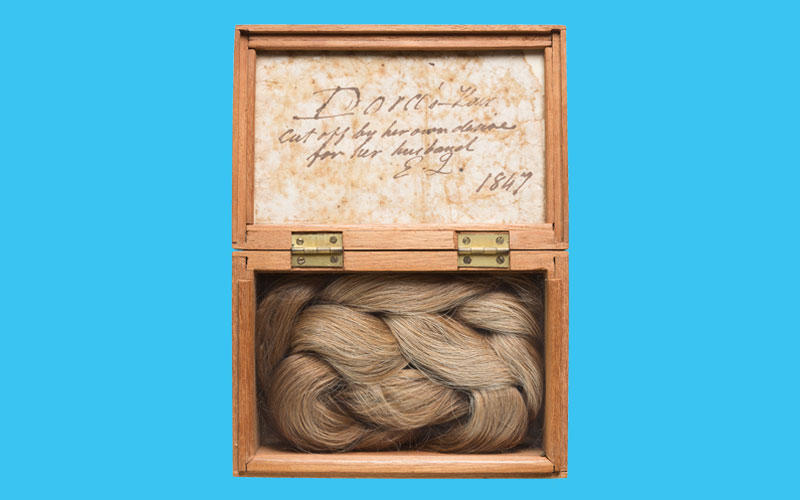
6 After leaving Dora’s Field, turn left and walk back along the A591 towards Ambleside, continuing past the turning for Rydal Mount.
7 After 300 metres, take the narrow road on the right over a bridge and then turn right again.
8 Emerging from the trees, bear right to drop to a lakeside path. Continue with the water on your right.
F Cumbria’s lakes used to freeze over in the winter – and still do from time to time. A keen skater, William often used to take to the ice on Rydal Water. Two pairs of his ice-skates can be seen, one at Dove Cottage and another in Wordsworth Museum.
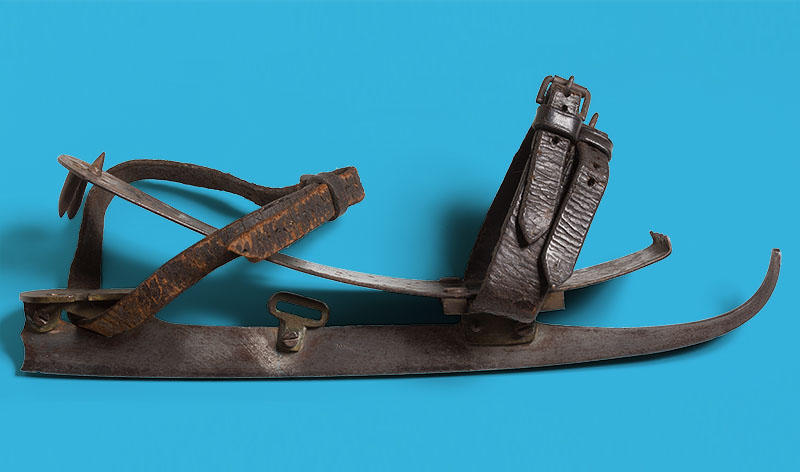
9 About 1.2km after first joining the lakeside path, and having since climbed from the water’s edge, go through a gate in a wall on the right to enter woodland. Ignoring an early path to the left, head downhill.
10 Cross the bridge over the River Rothay and turn right.
11 Take the first path on the left.
12 Having climbed to the road, carefully cross over and turn left.
13 After 80 metres, take the narrow lane rising to the right.
G Having walked about 600 metres along this lane, you’ll see a farm gate on the left. The subject of at least two of Wordsworth’s poems, local tradition has it that if you make a wish at the gate it will be granted. It’s known as the Wishing Gate, although the Wordsworths liked to call it ‘Sara’s Gate’ because it was a favourite haunt of Sara Hutchinson, Mary’s sister. A frequent visitor to Dove Cottage, a silhouette of Sara can be seen at the Wordsworths’ former home.
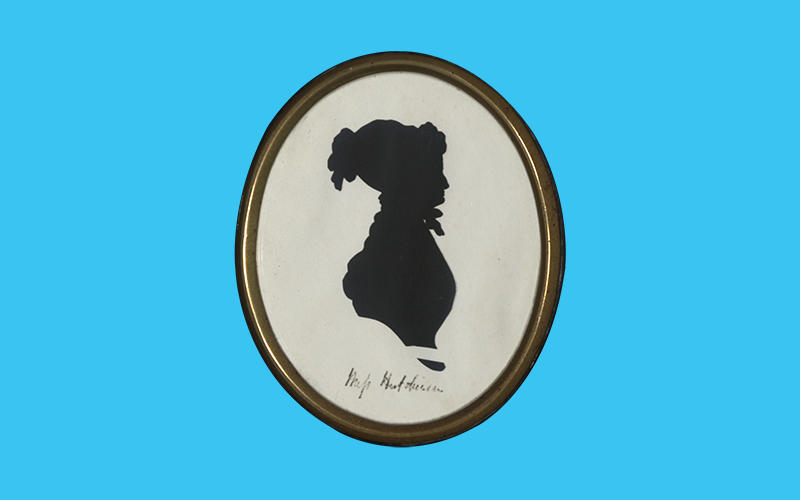
14 From the gate, retrace your steps along the lane for about 100 metres and go through a gate on the left to access a trail through the woods.
H You’re now walking in the footsteps of John, William Wordsworth’s brother, who loved to stroll through this, then fir-tree lined, path that went on to be named ‘John’s Grove’ by the Wordsworths. Described by William as a “silent poet...”, John was captain of the Earl of Abergavenny, a large ship owned by the East India Company used for trade between the UK and China. Sadly, John died when his ship went down in Weymouth Bay in 1805. Two East India Company cloth seals, retrieved from the wreck, can be seen in Dove Cottage.
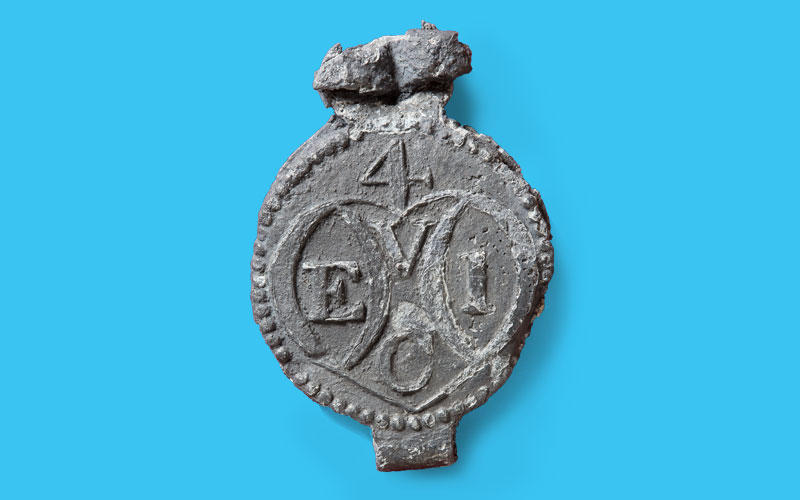
Returning to the lane at the far end of the grove, turn right. Keep left at the farm and head downhill back to Dove Cottage.
Choose one of our Trails of the Unexpected by either downloading a pdf or following the trail online. Explore the trails to discover the secrets of the Reivers’ clans, gems of the Arts and Crafts movement, the landscape that inspired Wordsworth, fascinating creative characters and Roman artefacts connected to Cumbria’s northern frontier. Start your trail below.